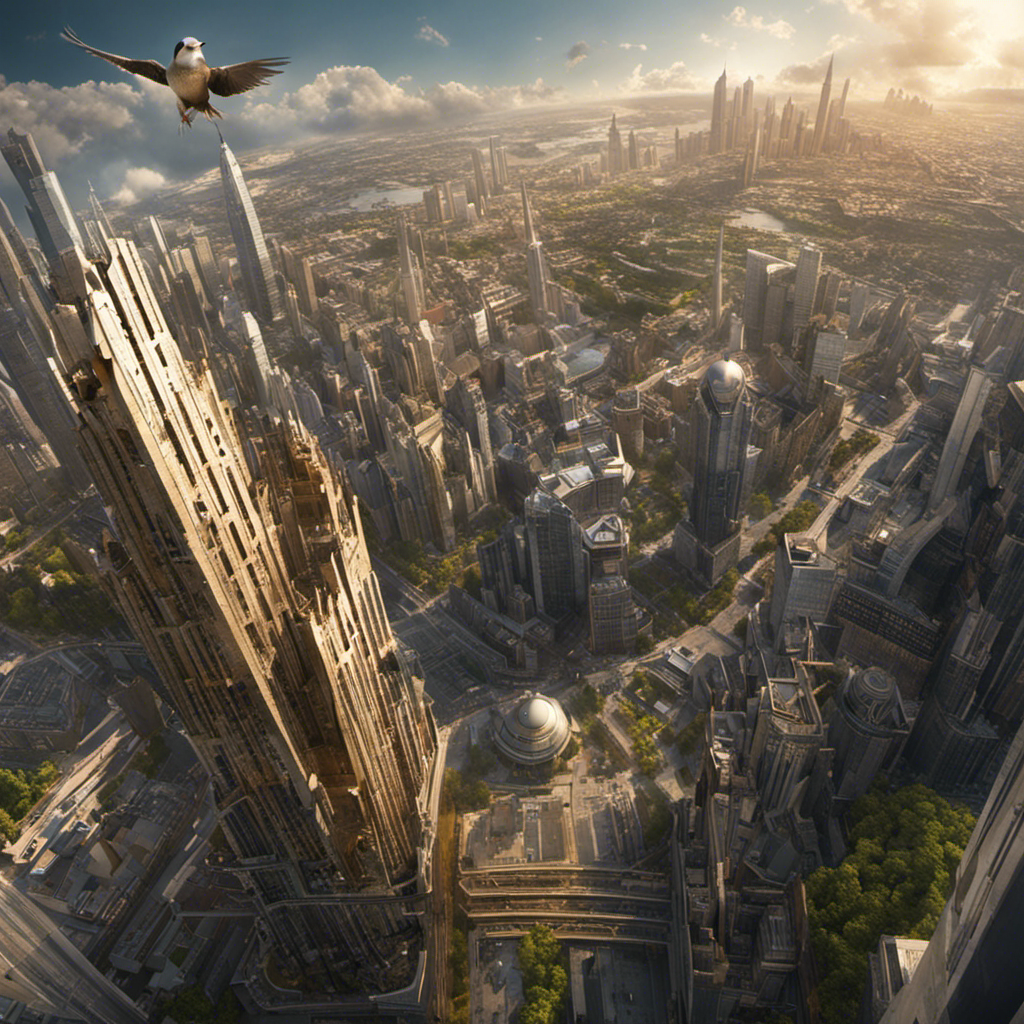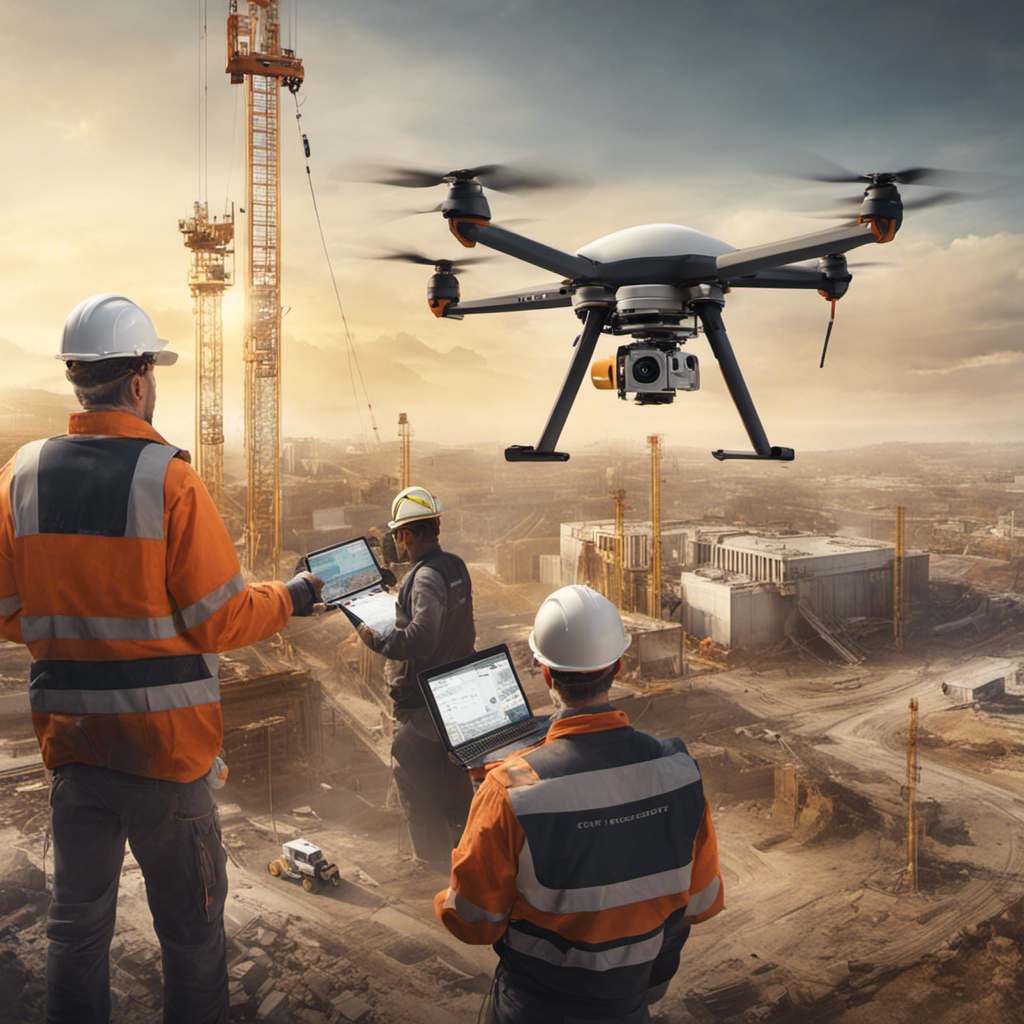Are you ready to embark on a journey through the skies? Welcome to ‘Fine Art From The Sky: Elevating Photography To New Heights,’ where you’ll discover the breathtaking aerial photographs of Nadar, a visionary photographer who defied the norms of his time.
Picture this: Nadar capturing stunning images from a hot-air balloon, long before aerial photography was recognized as art. This collection challenges the boundaries of what we consider art and celebrates Nadar’s innovative spirit.
Through vibrant colors and clever satire, you’ll witness the intersection of photography and fine art like never before.
Get ready to soar to new heights and explore the beauty that can only be seen from above.
Key Takeaways
- Aerial photography has evolved and revolutionized the perception of photography, transitioning from a curiosity to an art form.
- Drone technology has revolutionized aerial photography, providing access to unique perspectives and previously unattainable viewpoints.
- Aerial photography captures landscapes, cityscapes, and abstract compositions, expanding the possibilities of what is considered art.
- Aerial photography transcends traditional perspectives, redefining the boundaries of fine art photography and inspiring new artistic visions and interpretations.
The Evolution of Aerial Photography
In the early 20th century, you’ll witness the remarkable evolution of aerial photography. It was during this time that photographers like Nadar pushed the boundaries of the medium, capturing breathtaking images from high above the ground. Aerial photography, once seen as a mere curiosity, began to be recognized for its artistic potential.
The lithograph by Nadar, with its satirical tone, reflects the challenges faced by early aerial photographers in gaining recognition for their work. Through lithography, Nadar was able to convey the vibrant colors and intricate details of his aerial photographs, elevating them to the height of art.
This evolution marked a turning point in the perception of photography, as it transitioned from a scientific tool to a respected form of artistic expression. The advent of aerial photography truly soared to new heights in the early 20th century, revolutionizing the way we view the world from above.
Advancements in Drone Technology
With the evolution of drone technology, you can now capture stunning aerial photographs from unprecedented heights. The advancements in drone technology have revolutionized the field of photography by providing photographers with new tools and capabilities.
Drones equipped with high-quality cameras allow for the capture of vivid images with exceptional resolution and maximum color accuracy. These advancements have opened up new artistic possibilities, allowing photographers to access and photograph landscapes and cityscapes from elevated viewpoints that were previously unattainable.
The use of drones has transformed the art of photography, offering unique perspectives and angles that enhance the overall quality of aerial photography. With the ability to capture intricate details and smooth transitions of color gradients, photographers can now create fine art from the sky, elevating the art form to new heights.
Capturing the Unseen: Unique Perspectives From Above
To capture the unseen and reveal unique perspectives from above, you can explore the limitless possibilities of aerial photography. With this innovative approach, you have the power to unlock hidden beauty and expose unseen details that are often overlooked from ground level.
From the vantage point of the sky, you can capture the world in a way that challenges conventional perceptions and invites a sense of wonder. By showcasing familiar scenes from a fresh perspective, aerial photography allows you to present the world in a new light, offering viewers an opportunity to appreciate the intricate patterns, textures, and symmetries that are only visible from above.
Through this medium, you have the freedom to showcase the world’s hidden wonders and capture the unseen in a way that’s truly awe-inspiring.
The Artistic Impact of Aerial Photography
Explore the artistic impact of aerial photography and discover the transformative power it holds.
Aerial photography has the ability to transcend traditional perspectives and challenge our preconceived notions of space and perspective in art. Through capturing unique vantage points from above, aerial photography offers viewers a fresh and captivating visual experience.
The grandeur and scale of these images, showcasing vast expanses and intricate details, evoke a sense of awe and wonder. This transformative power is especially evident in the production of art prints. When these breathtaking aerial photographs are translated into art prints, they become more than just images; they become a portal to another world.
The ability to view and engage with these prints allows for a deeper connection with the artwork, provoking emotional and intellectual responses from the viewer. Aerial photography has truly revolutionized the art world, inspiring new artistic visions and interpretations, and pushing the boundaries of creativity.
Redefining the Boundaries of Fine Art Photography
As you delve into the exciting world of aerial photography, you’ll discover how it redefines the boundaries of fine art photography.
Traditionally, fine art photography has been confined to ground-level perspectives, capturing moments in time from a limited vantage point.
However, with the advent of aerial photography, artists now have the freedom to capture images from above, offering a unique and captivating viewpoint.
This new perspective challenges the traditional boundaries of fine art photography, pushing the limits of what’s considered art.
The use of aerial photography allows artists to capture landscapes, cityscapes, and even abstract compositions in ways that were previously unimaginable.
Frequently Asked Questions
What Is the Purpose of Nadar Raising Photography to the Height of Art?
The purpose of Nadar raising photography to the height of art is to challenge the perception that it is a lesser art form. By elevating it, he aims to emphasize its potential as a legitimate form of artistic expression and showcase its impact on photography.
What Is Honore Daumier Poking Fun at in His Piece Nadar Elevating Photography to the Heights of Art?
In his piece “Nadar Elevating Photography to the Heights of Art,” Honore Daumier satirically critiques something. He pokes fun at a specific aspect, highlighting the humor in it.
Which Art Movement Considered Photography as a New Way of Seeing?
The art movement that considered photography as a new way of seeing was Impressionism. Its historical significance lies in challenging traditional artistic techniques and embracing the unique perspective offered by photography.
What Photographic Process Did Nadar Use?
You’re probably wondering what photographic process Nadar used. Well, he used lithography, a revolutionary technique that allowed him to create his own prints without an engraver. It was a true photographic innovation.




